Scandinavian design is renowned for its simplicity, functionality, and ability to create a cozy yet minimal aesthetic. One of its most defining characteristics is the use of natural materials, especially natural fibers, to bring warmth, texture, and depth to a space. By incorporating elements like wool, linen, jute, and rattan, you can soften the clean lines of Nordic design and add a layer of visual interest that makes the home feel inviting and grounded.
My love for natural fibers in Scandinavian decor began with a single jute rug. I was experimenting with ways to make my living room feel cozier without adding too much color or clutter. The texture of the rug instantly transformed the space, giving it a tactile quality that was both calming and stylish. From there, I started incorporating linen cushions, wool throws, and woven baskets, each piece adding its own subtle charm. The result was a harmonious balance of texture and simplicity that made the space feel effortlessly put together.
If you’re looking to elevate your Scandinavian-inspired interiors with natural fibers, this guide will show you how to do it effectively. From rugs and cushions to wall decor and furniture, discover the many ways natural fibers can add texture and warmth to your home.
The Perfect Design for You
Using natural fibers in Scandinavian decor is perfect for anyone who values a minimalist aesthetic but wants to avoid a space that feels cold or stark. It’s ideal for creating a cozy, inviting home that celebrates sustainability, craftsmanship, and timeless design.
Imagine a living room with white walls and light wood floors. A soft wool throw draped over a linen sofa adds a layer of warmth, while a jute rug anchors the seating area. A woven rattan pendant light hangs overhead, casting a warm glow, and a wicker basket by the fireplace holds extra blankets. These natural fiber elements not only enhance the room’s aesthetic but also make it feel more tactile and lived-in.
Picture Gallery
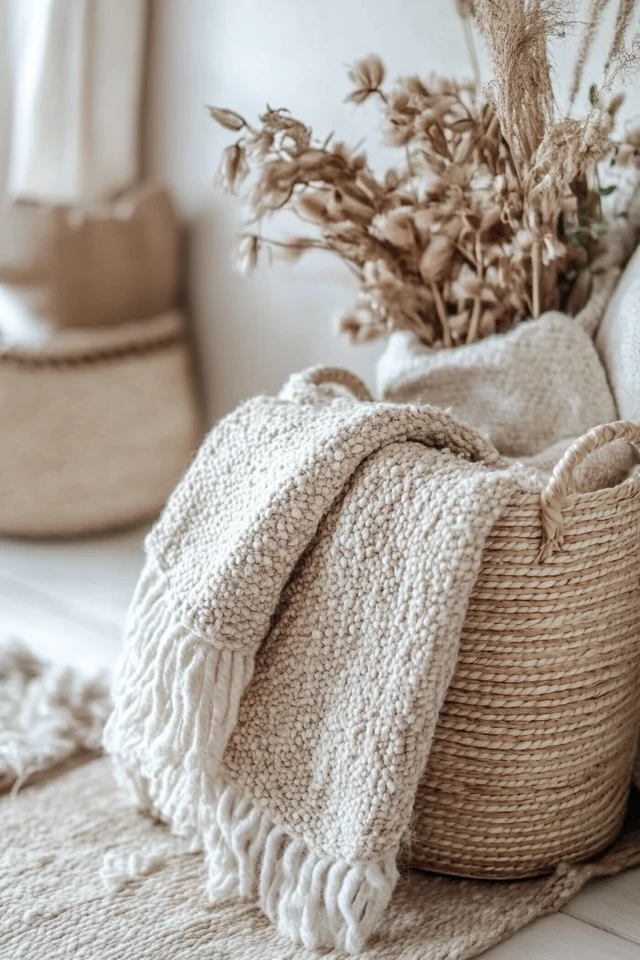
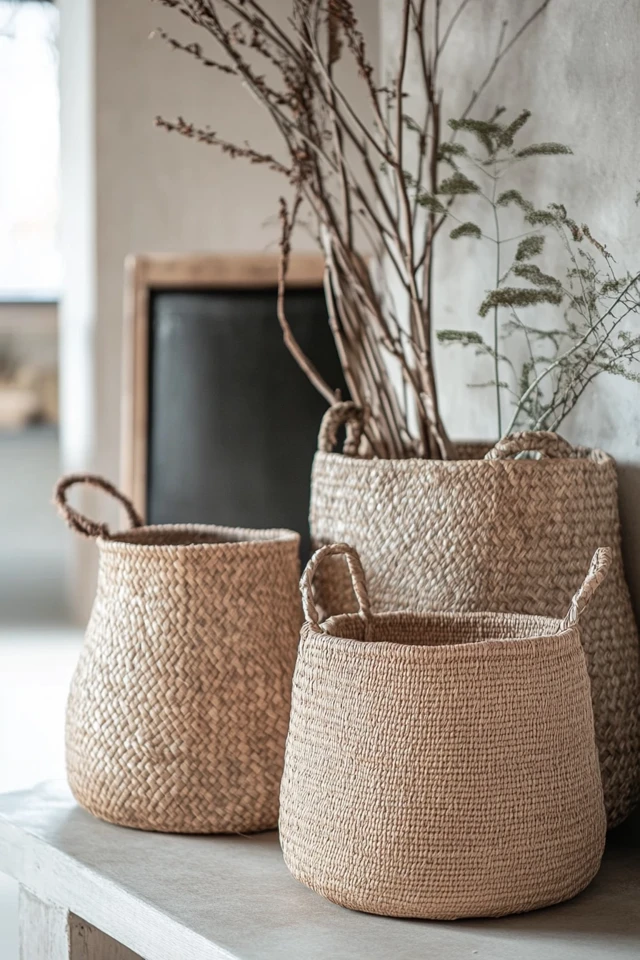

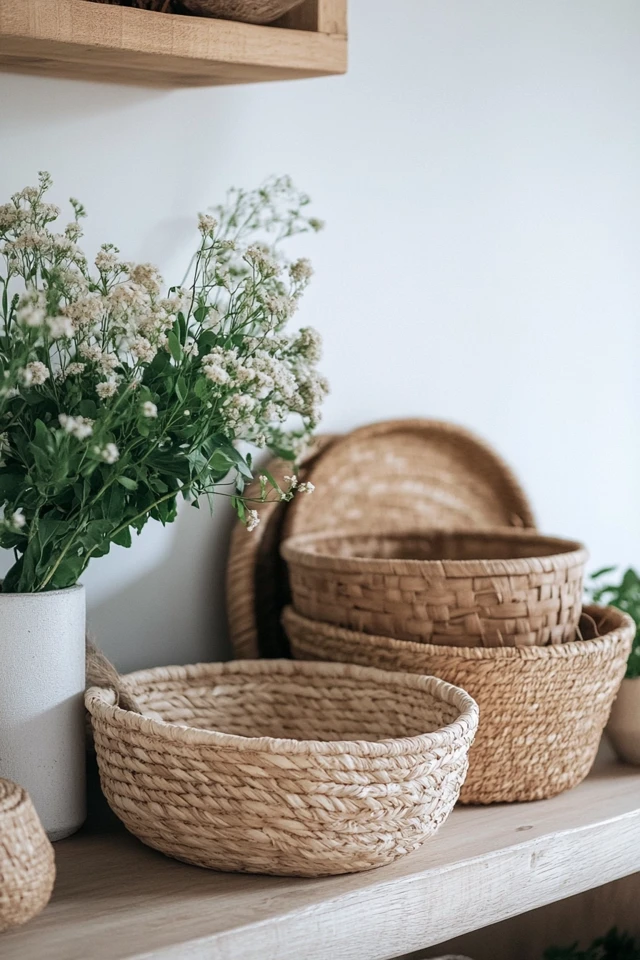
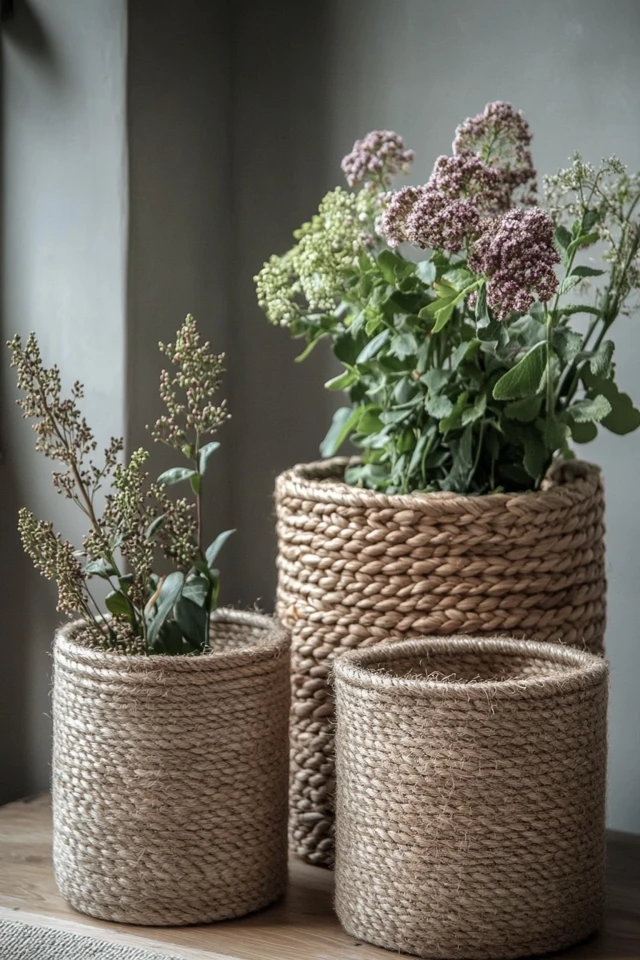
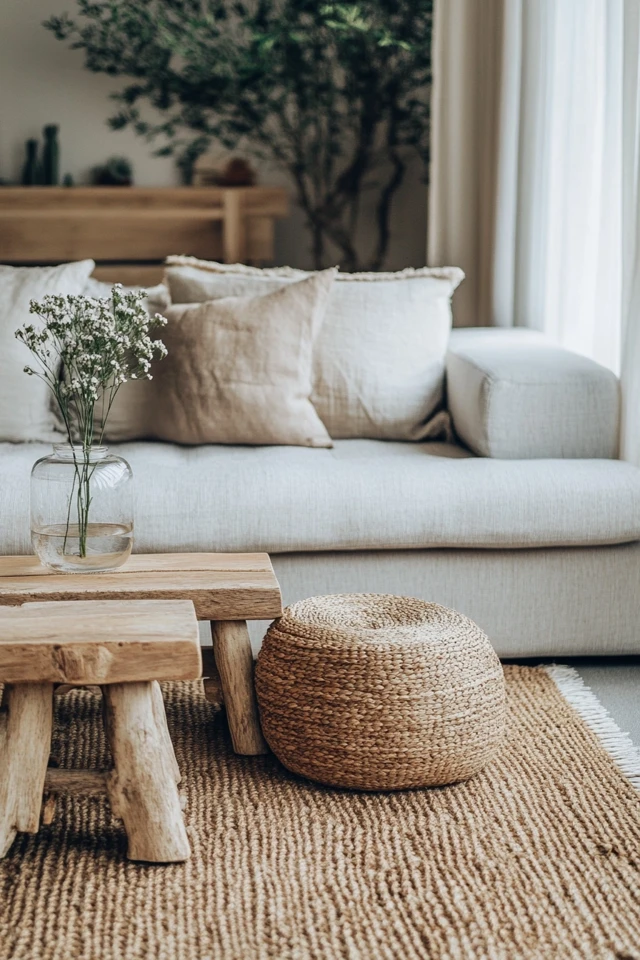
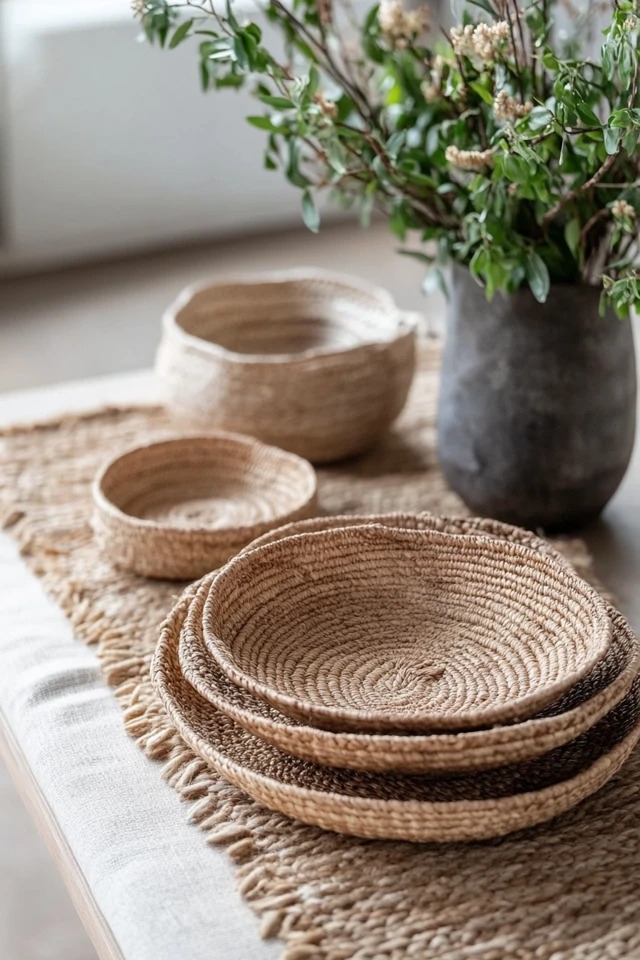
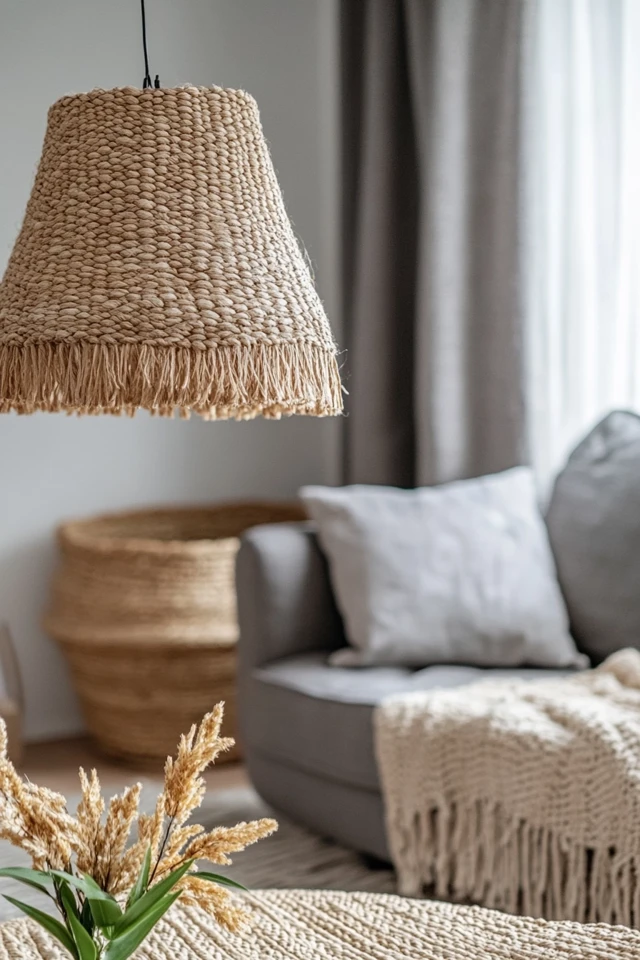
Why Natural Fibers Work So Well in Scandinavian Decor
Natural fibers align perfectly with Scandinavian design principles, which emphasize sustainability, simplicity, and a connection to nature. Here’s why they’re so effective:
Key Elements:
- Texture and Warmth: Natural fibers add visual and tactile texture, softening the clean lines of Scandinavian interiors.
- Neutral Palette: Fibers like jute, linen, and wool come in earthy tones that complement the neutral color schemes typical of Nordic design.
- Sustainability: Many natural fibers are eco-friendly, aligning with Scandinavian values of sustainability and conscious living.
- Timeless Appeal: Natural materials age beautifully and remain relevant, making them a lasting investment.
- Versatility: From rugs to furniture to decor, natural fibers can be used in countless ways to enhance any room.
Research shows that natural textures have a grounding effect, promoting relaxation and a sense of well-being. By incorporating natural fibers, you can create a home environment that feels both calming and inspiring.
How to Use Natural Fibers in Scandinavian Decor for Texture
1. Anchor the Space With a Jute or Sisal Rug
- Why It Works: These natural fiber rugs add warmth, texture, and durability while maintaining a neutral aesthetic.
- How to Do It:
- Place a jute rug under your coffee table or dining table to define the area.
- Choose a large, low-pile design to keep the look clean and minimal.
2. Add Linen Textiles for Softness
- Why It Works: Linen’s lightweight, breathable texture adds a relaxed, lived-in feel to Scandinavian spaces.
- How to Do It:
- Use linen curtains in neutral tones to soften windows and let in natural light.
- Incorporate linen cushions or duvet covers in soft greys, beiges, or muted pastels.
3. Incorporate Wool Throws and Blankets
- Why It Works: Wool is a staple in Scandinavian design, offering warmth and a cozy texture that complements minimalist interiors.
- How to Do It:
- Drape a chunky knit wool throw over a sofa or armchair for added comfort.
- Use wool blankets in bedrooms to layer on top of linen bedding.
4. Use Rattan or Wicker Furniture
- Why It Works: Rattan and wicker bring a light, airy quality to Scandinavian spaces, balancing heavier materials like wood or stone.
- How to Do It:
- Incorporate a rattan armchair or side table in your living room.
- Use wicker baskets for storage, placing them under benches or on open shelving.
5. Decorate With Woven Wall Hangings
- Why It Works: Wall hangings made of natural fibers like cotton or wool add texture and interest without overwhelming the space.
- How to Do It:
- Choose a neutral-toned macramé or woven tapestry to hang above a sofa or bed.
- Opt for simple, geometric designs to maintain the Scandinavian aesthetic.
6. Style the Dining Table With Natural Linens
- Why It Works: Linen tablecloths, napkins, and placemats enhance the dining experience while adding subtle texture.
- How to Do It:
- Layer a natural linen tablecloth with contrasting cloth napkins in soft earthy tones.
- Pair with simple ceramic dishware for a cohesive look.
7. Use Woven Light Fixtures
- Why It Works: Pendant lights made of rattan or bamboo create a warm, inviting glow while adding a sculptural element.
- How to Do It:
- Hang a woven pendant light above a dining table or in a cozy reading corner.
- Choose a natural finish to keep the look organic and understated.
8. Layer Textures With Cotton Throws and Cushions
- Why It Works: Cotton adds a softer, lighter texture that complements heavier materials like wool and jute.
- How to Do It:
- Use cotton throws with subtle patterns, such as stripes or herringbone, to add interest.
- Combine cotton cushions in varying sizes and textures for a layered look.
9. Opt for Hemp or Jute Storage Solutions
- Why It Works: Woven storage baskets made of hemp or jute are both practical and stylish.
- How to Do It:
- Use baskets to store blankets, toys, or magazines in the living room.
- Place a large jute basket by the entryway for shoes or umbrellas.
10. Add Coir or Sisal Doormats
- Why It Works: These durable, natural fiber mats are perfect for creating a welcoming entryway while withstanding heavy foot traffic.
- How to Do It:
- Choose a simple coir doormat with a minimal design to set the tone for your Scandinavian home.
- Pair with a woven jute rug runner for added texture.
FAQ Section
1. What are the most common natural fibers used in Scandinavian decor?
- Jute, wool, linen, rattan, wicker, sisal, and hemp are among the most popular.
2. Can natural fibers work in small spaces?
- Yes! Opt for smaller items like jute rugs, linen cushions, or woven baskets to add texture without overwhelming the space.
3. Are natural fibers durable?
- Most natural fibers, like jute, wool, and rattan, are highly durable and ideal for high-traffic areas. Linen and cotton require more care but are equally long-lasting.
4. How do I maintain natural fiber decor?
- Regular vacuuming and spot cleaning are usually sufficient for rugs and upholstery. Always check care labels for specific instructions.
5. Can natural fibers be used in modern Scandinavian designs?
- Absolutely! The organic textures of natural fibers add warmth and balance to sleek, modern interiors.
Variations
Minimalist Scandinavian Design
- Focus on light wood, white linen, and subtle jute textures for a clean, pared-back look.
Rustic Scandinavian Design
- Incorporate chunky wool throws, rattan furniture, and earthy tones for a cozy, rustic feel.
Modern Scandinavian Design
- Pair natural fibers with bold, geometric patterns or metallic accents for a contemporary twist.
How to Showcase It
Seasonal Changes
- Swap out lighter linens for heavier wool in winter, and use natural fibers like cotton and jute in summer.
Holiday Gatherings
- Add textured table runners, woven placemats, or a jute tree skirt to celebrate the season in Scandinavian style.
Everyday Functionality
- Highlight the practicality of natural fibers by using them for storage solutions or durable rugs in high-traffic areas.
Post-Renovation Reveal
- Show how natural fibers enhance the texture and warmth of your redesigned space with before-and-after photos.
Occasions to Feature It
- Family Living Areas: Use wool throws and jute rugs to create a cozy, family-friendly environment.
- Dining Experiences: Add linen table settings and woven pendant lights for intimate gatherings.
- Bedroom Retreats: Layer linen bedding with wool throws for a serene, hygge-inspired space.
Conclusion
Incorporating natural fibers into Scandinavian decor is a simple yet transformative way to add texture, warmth, and personality to your home. From jute rugs and linen curtains to rattan furniture and wool throws, these materials bring an organic, timeless quality that perfectly complements Nordic design principles.
Start experimenting with these ideas to infuse your space with natural textures and a sense of hygge. Whether it’s through a simple woven basket or a statement jute rug, the addition of natural fibers will make your home feel effortlessly inviting and beautifully balanced.


